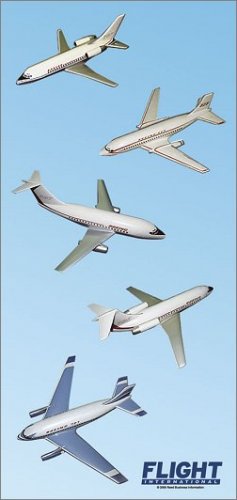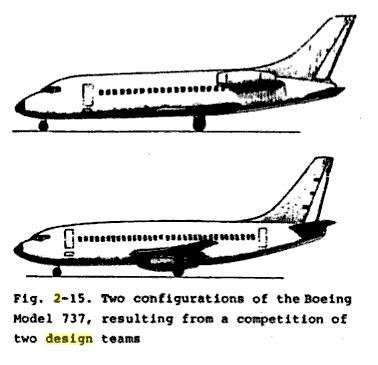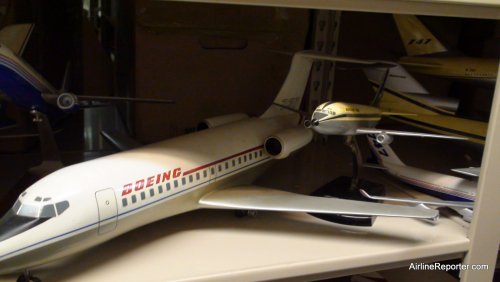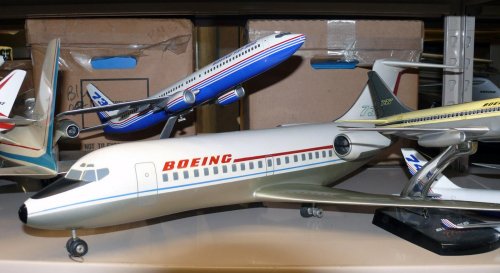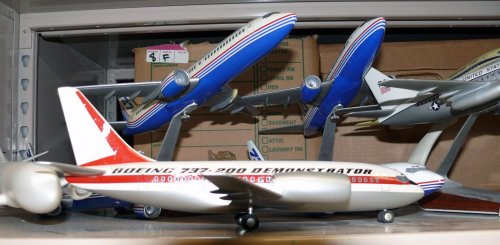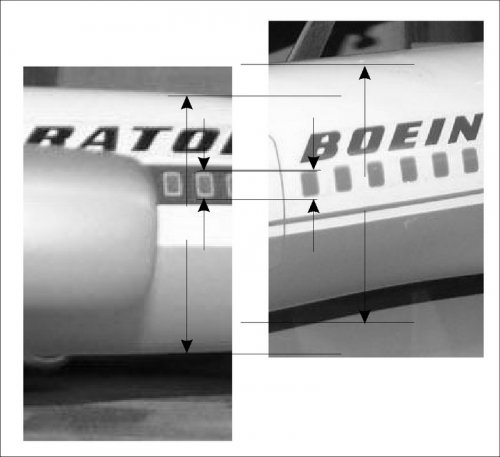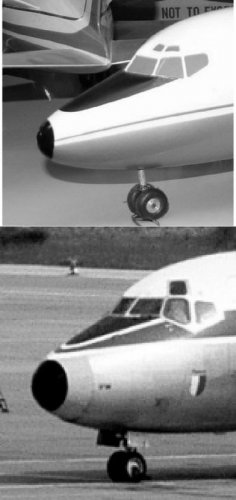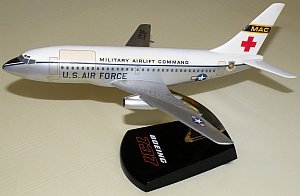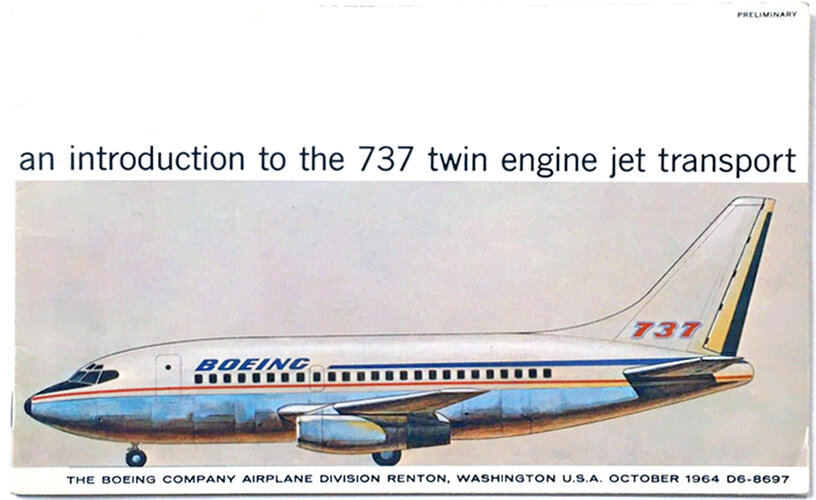You are using an out of date browser. It may not display this or other websites correctly.
You should upgrade or use an alternative browser.
You should upgrade or use an alternative browser.
Boeing 737 Development Concepts
- Thread starter hesham
- Start date
-
- Tags
- boeing cold war united states
- Joined
- 26 May 2006
- Messages
- 34,894
- Reaction score
- 15,759
Hi,
I found that book in google search and I found a strange info
about the two Boeing-737 configurations,I know they spoke
after that about the Sud Aviation Carrvelle,but notice the hint
under the drawing;
http://books.google.com.eg/books?id=NG2_qiSjmMEC&pg=PA418&dq=aircraft+design++2&lr=&num=100&as_brr=3&cd=6#v=onepage&q=aircraft%20design%20%202&f=true
Also I found on the pages 10 to 14,the M-184 jet airliner,and
I can't ID this aircraft.
I found that book in google search and I found a strange info
about the two Boeing-737 configurations,I know they spoke
after that about the Sud Aviation Carrvelle,but notice the hint
under the drawing;
http://books.google.com.eg/books?id=NG2_qiSjmMEC&pg=PA418&dq=aircraft+design++2&lr=&num=100&as_brr=3&cd=6#v=onepage&q=aircraft%20design%20%202&f=true
Also I found on the pages 10 to 14,the M-184 jet airliner,and
I can't ID this aircraft.
Attachments
Steve Pace
Aviation History Writer
- Joined
- 6 January 2013
- Messages
- 2,266
- Reaction score
- 225
Could the M-plane be from Martin?
- Joined
- 25 June 2009
- Messages
- 14,752
- Reaction score
- 6,141
XB-70 Guy said:Could the M-plane be from Martin?
Definitely not in that timespan! (Martin's Model 184 was a 1944 project).
Besides, Martin never used the M- as a prefix, that was a mistake from magazines and historians!
M-184 seems like a Fairchild designation... and probably is, too. Other Fairchild projects of the same era were the M-185, M-186 and M-225.
Hesham, if you can post a picture of that M-184, we can see if it holds any commonality with the other Fairchild designs.
Model of Boeing 737 concept at the Boeing Archives.
From the picture caption on Flickr:
Source:
http://www.flickr.com/photos/airlinereporter/4956930739/in/set-72157624753056369/
From the picture caption on Flickr:
Boeing looked at making a rear engined 737.
Source:
http://www.flickr.com/photos/airlinereporter/4956930739/in/set-72157624753056369/
Attachments
Realistically - and historically - the alternative would be to either throw them out or destroy them. It's rare for an American aerospace company to give a damn about keeping such things.
- Joined
- 11 March 2006
- Messages
- 8,625
- Reaction score
- 3,804
Strange coincidence, that the nose of the version with the rear mounted engines looks much closer
to the much later "Boeing 717", although the fuselage diameter seems to have been the same for
all versions.
(blowup of the nose comes from a photo from http://www.sxf-spotterlempio.de/Diafundus.htm )
to the much later "Boeing 717", although the fuselage diameter seems to have been the same for
all versions.
(blowup of the nose comes from a photo from http://www.sxf-spotterlempio.de/Diafundus.htm )
Attachments
Boeing 717 as in the re-branded McDonnell Douglas MD-95? Or are you referring to another Boeing 717?
- Joined
- 11 March 2006
- Messages
- 8,625
- Reaction score
- 3,804
Triton said:Boeing 717 as in the re-branded McDonnell Douglas MD-95? Or are you referring to another Boeing 717?
No, I meant the MD-95, or actually the "DC 9", as shown in the lower part of the photo.
Sentinel Chicken
American 71 Heavy, contact departure 126.47
Didn't know such models still existed, the forward/overwing nacelle configuration is new to me. There's a past issue from Air International that has pictures and line drawings of the design evolution. Gonna have to go digging in the library for those.
The rear-engined T-tail version I believe is an early design study for five-abreast seating before Jack Steiner went for six-abreast seating to use the 707 fuselage cross-section/nose for two reasons- to save on development costs and time because Douglas was two years ahead of Boeing on the DC-9 and Steiner (with Joe Sutter's help) had determined that six-abreast seating offered better operational costs.
When they switched over to a six-abreast fuselage, the rear engined placement became more problematic. The model in the back left of the first shot *might* be one of the rear-engined six-abreast designs with a low set tailplane.
The rear-engined T-tail version I believe is an early design study for five-abreast seating before Jack Steiner went for six-abreast seating to use the 707 fuselage cross-section/nose for two reasons- to save on development costs and time because Douglas was two years ahead of Boeing on the DC-9 and Steiner (with Joe Sutter's help) had determined that six-abreast seating offered better operational costs.
When they switched over to a six-abreast fuselage, the rear engined placement became more problematic. The model in the back left of the first shot *might* be one of the rear-engined six-abreast designs with a low set tailplane.
Electric driven nose wheel

To help speed things up, Stirling Dynamics has contracted with WheelTug to design a new nose wheel for Boeing's 737NG jet airliner. The new wheel will contain electric motors powered by the aircraft's Auxiliary Power Unit (APU)

- Joined
- 9 October 2009
- Messages
- 21,969
- Reaction score
- 13,616
With regards as to the 737-200, looks like it will be with us for a while yet, especially our Canadian friends:
Flew on one of those to a diamond mine which is near the Arctic Circle a few years ago. We landed and took off on a gravel runway. You can see the 'gravel kit' in the picture above. You actually see more of the -200's converted as freighters up there.
OOPs, should have watched the video first. Four of those airlines shown I used to see at YYC (Calgary International) when I worked there (up to November 2018) and I've seen most of the -200s too
OOPs, should have watched the video first. Four of those airlines shown I used to see at YYC (Calgary International) when I worked there (up to November 2018) and I've seen most of the -200s too
Last edited:
- Joined
- 9 October 2009
- Messages
- 21,969
- Reaction score
- 13,616
- Joined
- 19 July 2016
- Messages
- 4,275
- Reaction score
- 3,459
That explanation is at least 9 minutes too long but he does love his own voice. ZZZZZZZZzzzzzzzzzzzzzz
taildragger
You can count on me - I won a contest
- Joined
- 2 November 2008
- Messages
- 404
- Reaction score
- 502
Here's a brochure produced fairly late in the development of the world's most successful jetliner 737-100 showing a different aft fuselage profile. Since the 707, all Boeing jetliners (the 727 doesn't count) have had a similar upswept rear fuselage, but this drawing shows that this wasn't always a given. It seems kind of dumpy-looking in this configuration and I think that the final shape is an aesthetic improvement. I wonder if this was a purely engineering-driven change or if someone insisted on more of a family resemblance for marketing reasons.

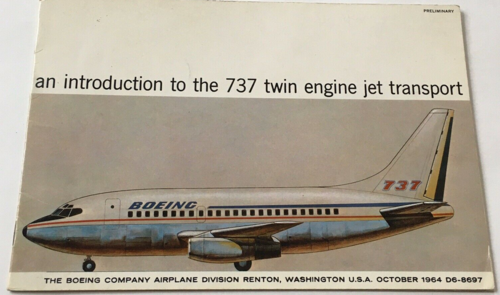
Last edited:
sgeorges4
I really should change my personal text
- Joined
- 8 October 2017
- Messages
- 665
- Reaction score
- 334
this articl has a verry interesting brochure on the 737 200 from 1965 showing its different configuration and describing it (i'll use it as the basis for my airfix 200 I'll get for my birthday, will do it in the ansett livery) http://theairchive.net/boeing-memorabilia/
- Joined
- 9 October 2009
- Messages
- 21,969
- Reaction score
- 13,616

The oldest passenger planes still in the sky
How would you feel about flying in a plane built 50 years ago? We go in search of aviation’s most venerable birdswww.telegraph.co.uk
Would you feel uneasy flying on a plane built in 1974? Harold Wilson was enjoying his second stint in Number 10, the band Queen was in its pomp, man’s first small step on the surface of the moon was still relatively fresh in the memory. And 1974 was also the year that a Boeing 737-200, with the serial number 20836, made its maiden flight for Transavia Airlines, based in the Netherlands.
Forty-eight years on, Harold Wilson has shuffled off this mortal coil, as has Freddie, while Nasa is hoping to start a colony on Mars. But 20836 is still going strong in the services of Nolinor Aviation, a Canadian charter airline, under the registration C-GNLK.
Its journey from Holland to Quebec has been a circuitous one, covering five continents. After leaving the low-cost Dutch airline in 1977 it went to Saudia, then Aerolineas Argentinas. Next up was the now-defunct Australian Airlines, followed by Air Florida, another former carrier. MarkAir, based in Alaska (also deceased), came next, before a stint as a cargo plane. In 2004, it went to Peru. In 2006, it was bought by the short-lived Italian airline Voliamo. In 2008, CityLine Hungary – which ceased trading in 2015 – snapped up the well travelled 737.
Since 2014, however, it has been in the services of little Nolinor Aviation, based in Mirabel, a suburb of Montreal, which serves a handful of domestic destinations using a fleet of 18 aircraft. At 48 years, it is, according to the database of Airfleets.net, the world’s oldest passenger plane still in service.
Apples and oranges. DC-3s are not pressurized. B-52s are not utilized anywhere near as intensively as airliners, particularly short-haul airliners. A 737 goes through many more take-offs and landings and many more pressurization, depressurization cycles. So metal fatigue is more of a worry.You might also ask those flying on DC-3s or B-52s. As long as they have been properly maintained and upgraded, it is not an unmanageable problem.
Old airliners cycle through a lot of marginal airlines in their old age, so consistent maintenance and inspection are less likely--anything operated by Air Florida would make me nervous, given my limited but memorable experience.
This 737 side view image is amazing .Here's a brochure produced fairly late in the development of theworld's most successful jetliner737-100 showing a different aft fuselage profile. Since the 707, all Boeing jetliners (the 727 doesn't count) have had a similar upswept rear fuselage, but this drawing shows that this wasn't always a given. It seems kind of dumpy-looking in this configuration and I think that the final shape is an aesthetic improvement. I wonder if this was a purely engineering-driven change or if someone insisted on more of a family resemblance for marketing reasons.
View attachment 629685
May I ask you to take photo from this side view more vertically in such a way that the outline of the 737 can be corrected ? It seems that you have taken a photo by some angle and the side view is not exactly same one in the original document .
If you scan the original document I think the right view will be obtained .
I am a scale modeller and I need the three view of this 737 100 conceptual model which is even different than the original 737 100 originally developed and flew by the Boeing company ..the angles of the aircraft in this masterpiece are very important and thats why I am asking your help to assist me to obtain the threeview
I would appreciate it should you help me .
taildragger
You can count on me - I won a contest
- Joined
- 2 November 2008
- Messages
- 404
- Reaction score
- 502
Sorry, I've recently moved and the brochure is not immediately available to me. I'll post a non-angled photo once I can, but it probably won't be soon. The photo was angled to eliminate reflections. I think Photoshop or similar software can correct for the angle.This 737 side view image is amazing .
May I ask you to take photo from this side view more vertically in such a way that the outline of the 737 can be corrected ? It seems that you have taken a photo by some angle and the side view is not exactly same one in the original document .
If you scan the original document I think the right view will be obtained .
I am a scale modeller and I need the three view of this 737 100 conceptual model which is even different than the original 737 100 originally developed and flew by the Boeing company ..the angles of the aircraft in this masterpiece are very important and thats why I am asking your help to assist me to obtain the threeview
I would appreciate it should you help me .
- Joined
- 19 February 2007
- Messages
- 1,440
- Reaction score
- 2,677
isayyo2
Lurker alert
- Joined
- 24 November 2011
- Messages
- 1,131
- Reaction score
- 2,330
Boeing 737M for Military Application Brochure - October 1965

 theairchive.net
theairchive.net


Boeing 737 Boeing 737M for Military Application Brochure Oct 1965 from La Jetée Press
Boeing 737 Boeing 737M for Military Application Brochure Oct 1965 from La Jetée Press
 theairchive.net
theairchive.net
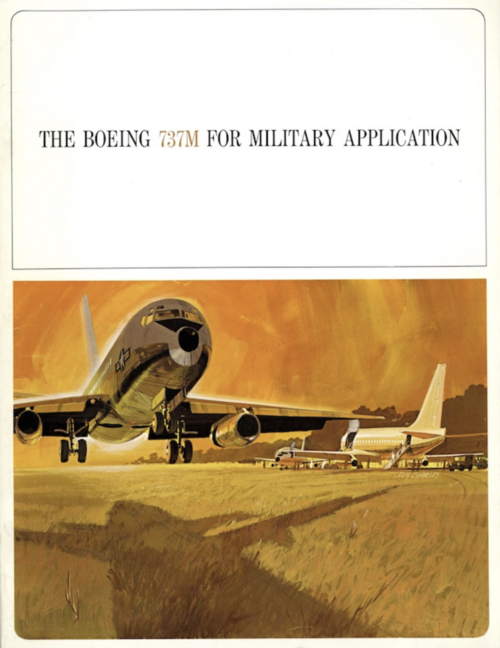
Similar threads
-
United States Navy Electronic Patrol X (EPX)
- Started by Triton
- Replies: 5
-
-
Boeing C-17 as Airliner and Four Engined Model-777 Projects
- Started by hesham
- Replies: 17
-
Boeing P-8A Poseidon (737-800EFV) MMA (Multi-mission Maritime Aircraft)
- Started by hesham
- Replies: 327
-

